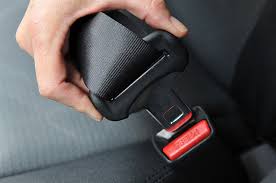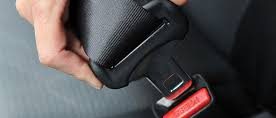MANDATORY SAFETY DEVICES
Safety Devices
Since the first automobile was produced, there have been countless innovations in vehicle safety devices. These safety devices are intended to protect us from every type of injury that could possibly occur resulting from an auto accident.
Some types of safety devices include:
- Airbags
- Anti-lock breaks
- Auto dimming mirrors
- Automatic braking systems (ABS)
- Backing up sensing systems
- Blind spot detection systems
- Daytime running lights
- Electronic stability control (ESC)
- Enhanced visibility
- Forward collision warning systems
- Head restraints
- Lane departure warning systems
- Padded knee bolster
- Parking assist
- Rearview cameras
- Reverse backup sensors
- Seatbelts
- Side-view assist
FGS® – HUD Visor is designed to prevent some car collision due to frontal glare during the day or night time.
Mandatory life-saving devices
The cost and crashworthiness of vehicles, as well as drivers’ safety habits, affect the cost of auto insurance. Out of concern for public safety and to help reduce the cost of crashes, insurers support safe driving initiatives. The insurance industry is a major supporter of anti-drunk driving and seatbelt usage campaigns.
Safety devices save people lives:
Airbags
 Airbags are designed to inflate in moderate to severe frontal crashes. The National Highway Traffic Safety Administration (NHTSA) says that as of 2013 there were 202 million airbag-equipped passenger vehicles on the road in the United States, including 199 million with dual air bags. The agency says that frontal airbags saved 2,396 lives of those age 13 and older in 2014. Airbags, combined with seatbelts, are the most effective safety protection available for passenger vehicles. Seatbelts alone reduce the risk of fatal injury to front-seat passenger car occupants by 45 percent. The fatality-reducing effectiveness for frontal airbags is 14 percent when no seatbelt is used and 11 percent when a seatbelt is used in conjunction with airbags.
Airbags are designed to inflate in moderate to severe frontal crashes. The National Highway Traffic Safety Administration (NHTSA) says that as of 2013 there were 202 million airbag-equipped passenger vehicles on the road in the United States, including 199 million with dual air bags. The agency says that frontal airbags saved 2,396 lives of those age 13 and older in 2014. Airbags, combined with seatbelts, are the most effective safety protection available for passenger vehicles. Seatbelts alone reduce the risk of fatal injury to front-seat passenger car occupants by 45 percent. The fatality-reducing effectiveness for frontal airbags is 14 percent when no seatbelt is used and 11 percent when a seatbelt is used in conjunction with airbags.
Seatbelts

Seat Belt
Among passenger vehicle occupants age five and older, seatbelts saved an estimated 12,802 lives in 2014. In fatal crashes in 2014, about 80 percent of passenger vehicle occupants who were totally ejected from the vehicle were killed. NHTSA says that when used seat belts reduce the risk of fatal injury to front seat passenger car occupants by 45 percent and the risk of moderate-to-critical injury by 50 percent. For light truck occupants, the risk is reduced by 60 percent and 65 percent, respectively.
Child Safety Seats

Child Safety Seats:
NHTSA says that in 2014 the lives of an estimated 252 children under the age of five were saved by restraints.
Electronic Stability Control (ESC)

Electronic Stability Control
The National Highway Traffic Safety Administration (NHTSA) requires all vehicles manufactured after model year 2012 to have electronic stability control (ESC). All new passenger cars, light trucks, SUVs and vans must comply with the requirement. ESC was designed to help prevent rollovers and other types of crashes by controlling brakes and engine power.
- NHTSA says ESC saved an estimated 681 passenger car occupant lives in 2014 and 899 lives among light truck and van occupants for a total of 1,580 lives saved among passenger vehicle occupants. The 2014 total for lives compares with 1,366 lives saved in 2013 and 1,225 lives saved in 2012. Over the five years from 2010 to 2014, NHTSA says the ESC has saved a total of more than 4,100 lives.
- NHTSA estimated that about 99 million 2006-model year and newer passenger vehicles (passenger cars and light trucks and vans) were equipped with ESC. This works out to 38.8 percent of the 255 million passenger vehicles on the road in 2014.
- In May 2014 NHTSA released a report on updated estimates of fatality reduction by electronic stability control (ESC), which found that in single-vehicle crashes of passenger cars, where the first harmful event was a rollover, ESC decreased rollovers by 59.5 percent, relative to a control group. The reduction in rollovers was even more dramatic in LTVs such as pickup trucks, SUVs and vans, 74 percent.
- In June 2010 the Insurance Institute for Highway Safety (IIHS) released the findings of a study that found that ESC for passenger vehicles is one of the most effective technologies for the prevention of fatal crashes, especially rollovers. IIHS data show that it lowers the risk of a deadly crash by 33 percent and cuts the risk of a single-vehicle rollover by 73 percent. The IIHS examined 10 years of crash data from NHTSA.
Significant Car Safety Feature Dates
Beginning in the 1930s there have been numerous adjustments, modifications, and renovations which bring us to the modern day vehicles. Some of the most significant dates in the history of automotive safety innovations include:
- 1934 GM performs the first ever crash test
- 1947 American Tucker builds the first padded dashboard
- 1949 Saab produces first car with safety cage
- 1949 Chrysler produces first car to include standard disc breaks
- 1959 Volvo introduces first standard 3-point seatbelt
- 1964 Front outboard lap belts are required by law
- 1966 Front and rear outboard lap belts become mandatory
- 1966 The U.S. Department of Transportation and the National Transportation Safety Board are founded
- 1969 Front outboard head restraints become mandatory
- 1970 Ford offers rear-wheel anti-lock brake system
- 1974 GM offers both driver and passenger airbags
- 1979 The NHTSA publishes crash test results
- 1986 The third break light becomes standard
- 1994 Crash tests are made mandatory on all vehicles
- 2003 The IIHS begins implementing side-impact crash testing
- 2009 Citroen introduces an Intelligent Anti-Skid system
We anticipate that FGS® – HUD Visor will quickly enter this category of mandatory safety devices for all vehicles.




